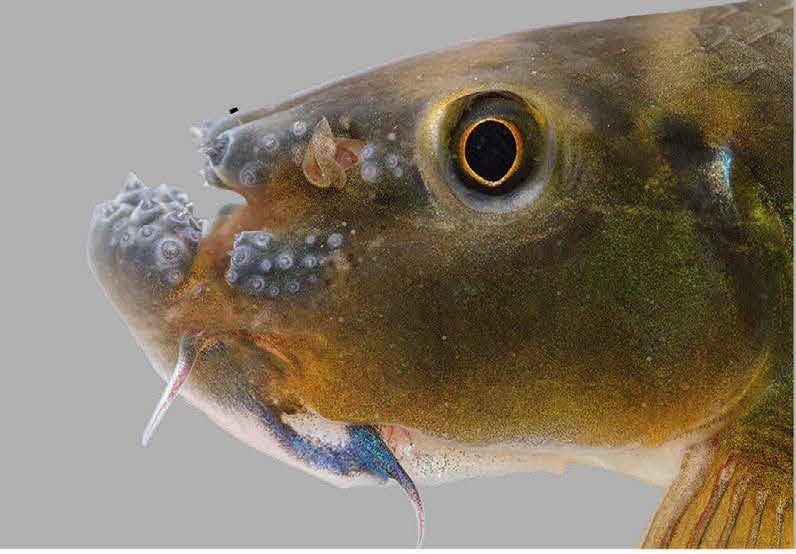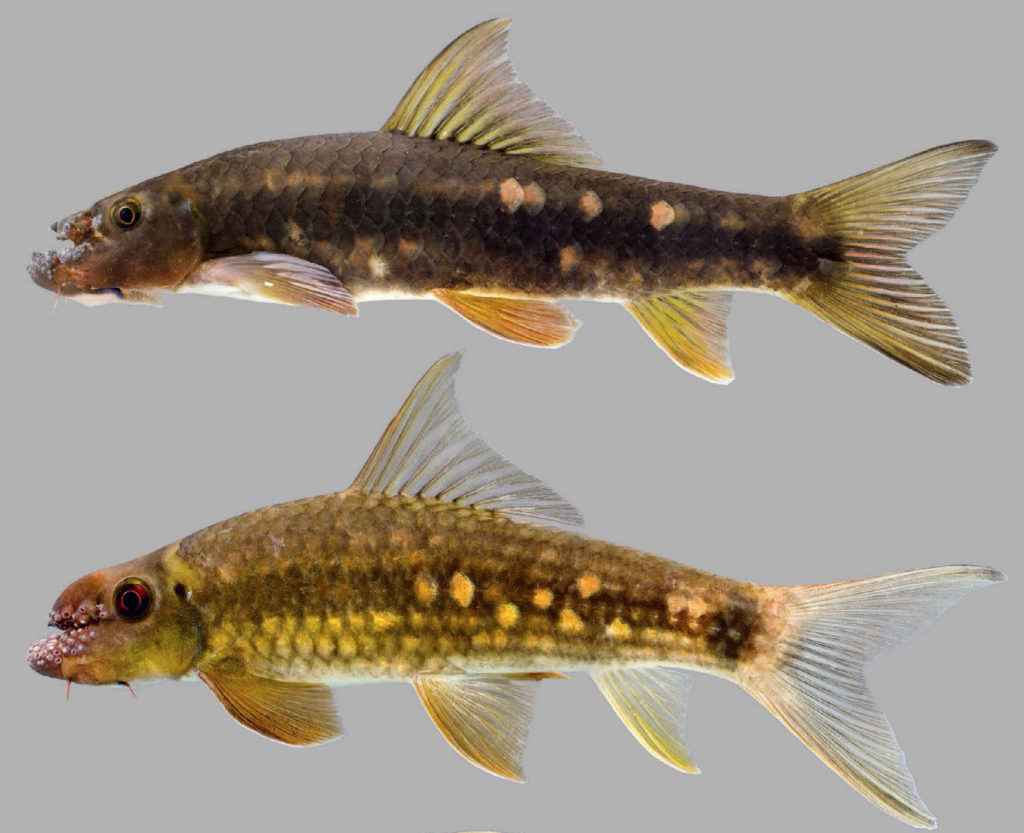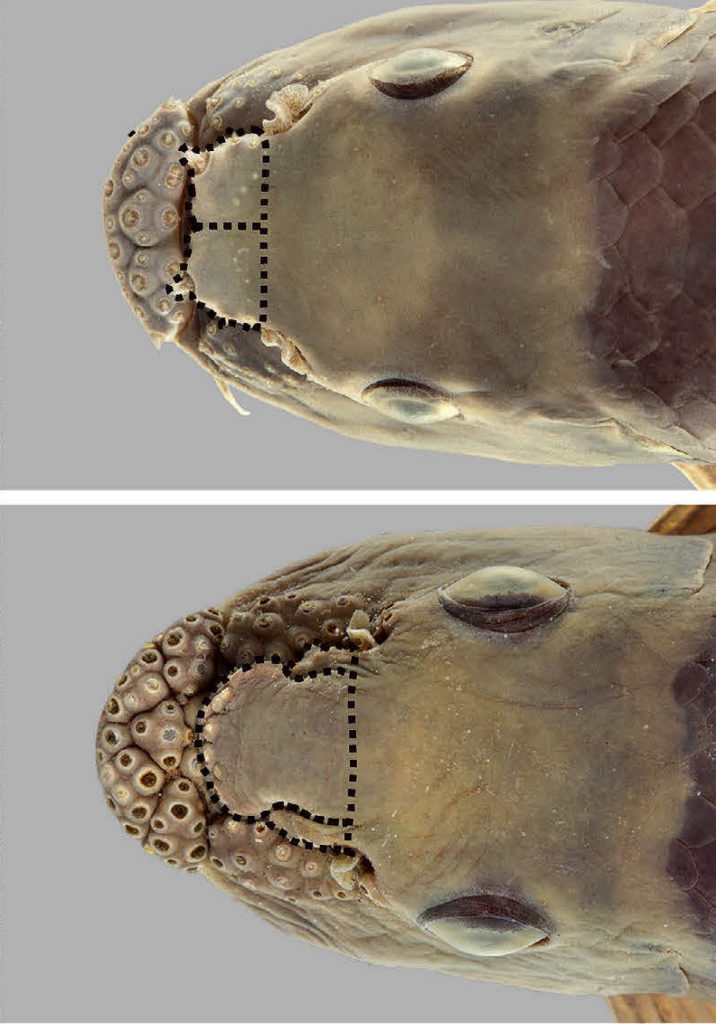
Look twice! What initially resembles a terminal mouth is really the strange ornamentation of a newly described species, Garra surinbinnani. Image published in Page et al. 2019.
Sexual selection is a driving force behind extreme ornamentation in many species regardless of taxon. Perhaps, it is also the reason for the bizarre tubercle laden bi-lobed forehead of a newly described Garra species endemic to the Mae Khlong basin of Thailand. However, both sexes display such oddities. For whatever the reason behind its peculiar appearance, the discovery and description of Garra surinbinnani by Larry Page, curator of fishes at the Florida Museum of Natural History, and his team of scientists in the journal Ichthyological Exploration of Freshwaters, provides us with an introduction to this strange fish.
With such an outlandish appearance of adults, one could assume that its identification would be fairly straight forward. However, G. surinbinnani was previously confused with another species within the genus Garra that had a somewhat similar profile, G. fuliginosa, another resident of fast-flowing riffles of streams in the Mae Khlong basin.

Garra surinbinnani (top) isn’t the only Garra that exhibits a strange lobed snout. Garra fuliginosa (bottom) also from the Mae Khlong basin in western Thailand has a similarly intriguing profile. Image from Page et al. 2019.
General Appearance and Distinguishing Features
Garra surinbinnani can be distinguished from all other known proboscis-wielding Garra species of Southeast Asia by having a rectangular, bi-lobed (opposed to a 1- or 3-lobed) proboscis on the snout and a deep lateral groove that separates a large transverse lobe from the rest of the snout. In juveniles, the bi-lobed proboscis is present, however, the transverse lobe can be in contact with or shallowly separate from the snout.

Garra surinbinnani (top) has a bi-obed proboscis, whereas G. fuliginosa has a tri-lobed proboscis. Image from Page et al 2019.
Overall, adult G. surinbinnani are brown with a dusky black stripe along the midline. This feature is present in juveniles as 3-6 dusky stripes; the middle two being the darkest. Fins have clear to dusky to black membranes, melanophores concentrated along the rays, and the tips of dorsal and anal fins can be yellow. Some individuals have dark pigmentation at the anterior margins of fins and the upper and lower margins of the caudal fin. Adults of both sexes may have large yellow scales scattered on the posterior half of the body, tubercles on the head, and blue maxillary barbels. The holotype and paratypes measured 47.9 to 101.7 mm SL.
Phylogenetic analysis grouped G. surinbinnani with all other proboscis-bearing species into a single clade, hinting that the possession of a proboscis is, not surprisingly, an indication of shared ancestry. Even though G. surinbinnani and G. fuliginosa co-occur in the Mae Khlong drainage, G. fuliginosa shared a more recent ancestry with species from the Salween and Mekong Rivers.
Garra surinbinnani was named after the late Surin Binnan, a leading figure in efforts to protect natural areas in Thailand.
With any luck, this bizarre fish with blue facial protrusions will eventually make it into the trade. It would definitely be a unique and desirable addition to any aquarium.
Additional coverage
https://www.floridamuseum.ufl.edu/science/netherworldly-fish-named-for-thai-conservationist/
Reference
Page, L.M., B.C. Ray, S. Tongnunui, D.A. Boyd, and Z.S. Randall. 2019. Garra surinbinnani, a new species of labeonine from the Mae Khlong basin of Thailand. Ichthyological Exploration of Freshwaters. IEF-1117:1-15. http://doi.org/10.23788/IEF-1117





